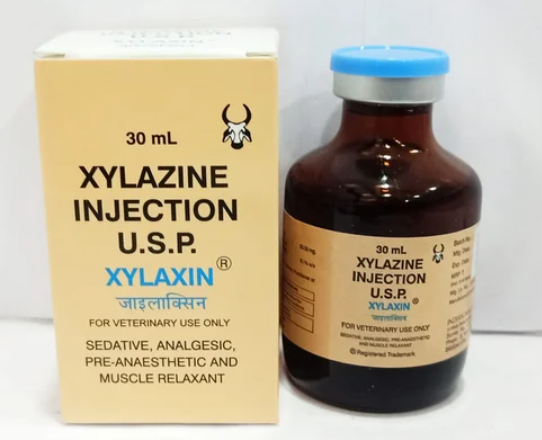
Xylazine, an animal tranquilizer, has emerged as a new concern in the opioid epidemic. Here is what you should be aware of
Xylazine, an animal tranquilizer, has emerged as a new concern in the opioid epidemic. Here is what you should be aware of!!!

A new danger has emerged in the illegal drug market in the United States, involving the use of an animal tranquilizer called xylazine. According to the White House Office of National Drug Control, the drug is being mixed with synthetic opioids, particularly fentanyl, leading to increased overdose cases and concerning side effects.
Although xylazine is not routinely tested for in postmortem toxicology, the Drug Enforcement Administration estimates that it was involved in at least 1,281 overdose deaths in the Northeast and 1,423 in the South in 2021.
Recently, ONDC director Dr. Rahul Gupta hosted a listening session with local public health and safety leaders to discuss trends related to xylazine and efforts to address it, including plans for tracking, substance use treatment, and harm reduction.
Here’s what you need to know about the animal tranquilizer and why health officials are working to stop its spread:
What is xylazine, and is it a horse tranquilizer? Xylazine is an animal tranquilizer created in the 1960s and used in veterinary medicine to sedate animals during procedures or diagnostic testing. Xylazine is not approved for human use by the Food and Drug Administration, and although it has been given to household pets in the past, it is now primarily used on larger animals such as horses, sheep, and elk.
What are the side effects of xylazine, and is it safe? Xylazine is not an opioid, but it has similar effects such as sedation, anesthesia, muscle relaxation, slowed respiratory rate, and slowed heart rate. Xylazine can be lethal because it slows down breathing, and humans are about 10 to 20 times more sensitive to it than animals are. Xylazine is frequently combined with opioids, which means that giving naloxone in the event of a suspected overdose is still recommended, although it cannot reverse xylazine toxicity. Medical providers may need to provide certain support measures in addition to naloxone.
Where is xylazine showing up? The DEA reports that exposure to xylazine is most common amongst people who use heroin, fentanyl, or cocaine. It is commonly found in drugs that have two or more substances present, and while some users actively seek substances with xylazine, others are surprised by the adulterated supply.
What are the street names for xylazine? Xylazine is known by several brand names, including Rompun, Sedazin, and AnaSed. In the illicit drug market, it is commonly referred to as Tranq, Tranq Dope, Sleep Cut, or Zombie Heroin.
Overall, the use of xylazine is a concerning development in the ongoing opioid epidemic in the United States, and health officials are working to combat its spread through tracking, substance use treatment, and harm reduction efforts.


Average Rating